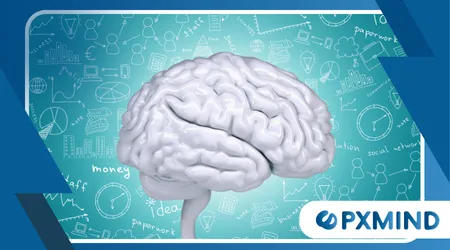How to Trick Your Brain into Enjoying Study Time

Trick Your Brain into Enjoying Study Time. It’s a common struggle: the moment you sit down to study, your mind wanders.
Anúncios
You stare at the pages, but your thoughts are a thousand miles away. You’re not alone.
Many people feel this way, and it’s why so many of us search for ways to trick your brain into enjoying study time.
The truth is, it’s not about finding a magic pill; it’s about understanding how your brain works and using that knowledge to your advantage.
The traditional approach to studying often feels like a chore, a necessary evil. We’ve been conditioned to view it as a mundane task.
But what if you could change that mindset entirely? What if the act of learning could be as satisfying as binging your favorite series? This isn’t just wishful thinking.
It’s a matter of psychological jujitsu, using your brain’s own mechanisms to make learning a rewarding experience.
Gamifying Your Grind: Turning Tasks into Triumphs
One of the most powerful ways to trick your brain into enjoying study time is through gamification. Think about why video games are so addictive.
They offer clear goals, immediate feedback, and a sense of progression. You can apply these same principles to your study sessions.
For example, use a timer to create “sprints” of focused work, followed by short breaks. This Pomodoro Technique is a classic for a reason.
Instead of an endless slog, you now have a series of manageable challenges. You can track your progress with a simple habit tracker or even a whiteboard.
Read hee: Learn Anything 2x Faster with These Mental Techniques
Reward yourself for each “level” you complete, whether it’s finishing a chapter or mastering a concept. The small, frequent wins will build momentum and create a positive feedback loop in your brain.
This approach transforms a dreaded obligation into an engaging game. You’re no longer just studying; you’re on a quest to conquer a new skill.
It’s about reframing the narrative from one of obligation to one of achievement.
By making your goals visible and your progress tangible, you’ll naturally feel more motivated and invested in the outcome.
The Power of Novelty and Environmental Conditioning
Your brain loves novelty. It’s hardwired to seek out new and interesting things. Use this to your advantage to trick your brain into enjoying study time.
Change up your study environment. Don’t always sit at the same desk in the same room. Go to a coffee shop, a library, or even a park.
A change of scenery can make the same old subject feel new and fresh.
Another powerful technique is environmental conditioning. This means associating a specific place with a specific task.
If you only use your desk for studying, your brain will start to link that location with concentration and focus.
Read more: How to Learn Faster with Proven Mindhacks
Over time, simply sitting at your desk will trigger your mind to get into study mode. This is a subtle but incredibly effective way to build a powerful habit.
Consider your senses. Use different-colored pens for notes, play a specific type of instrumental music, or even light a particular candle.
These sensory cues can help your brain create strong associations with the act of learning. The more senses you engage, the more robust the memory and the stronger the habit.

The Two-Minute Rule and Starting Small
The hardest part of any task is often just starting. The “Two-Minute Rule,” popularized by James Clear, is a brilliant way to overcome this hurdle.
The idea is simple: if a task takes less than two minutes, do it immediately.
If it’s a larger task, start with a two-minute version of it. Want to study for a test? Just open your book and read for two minutes.
This technique lowers the barrier to entry and makes the task less intimidating. Once you’ve started, the momentum often carries you forward.
The initial inertia is the biggest obstacle. By breaking a large, overwhelming task into a tiny, manageable one, you bypass your brain’s natural resistance.
++ Daily Rituals to Boost Emotional Resilience
It’s a mental judo move that makes procrastination almost impossible.
This also works for those days when you’re completely unmotivated. Even on your worst day, you can probably manage two minutes of reading.
This small win maintains the habit and prevents you from breaking your streak. Over time, these small actions compound into significant progress.
Rewarding Your Brain: The Dopamine Connection
Your brain is a reward-seeking machine. Dopamine, a neurotransmitter, plays a huge role in motivation and pleasure.
To effectively trick your brain into enjoying study time, you need to hack your own dopamine system.
Don’t just reward yourself for finishing a massive task; reward yourself for small, incremental steps.
For example, after 25 minutes of focused work, take a five-minute break to scroll on your phone or listen to a song.
This creates a positive feedback loop. Your brain starts to associate the feeling of reward with the act of studying.
The anticipation of the reward becomes a powerful motivator. This is the same mechanism that drives us to check social media or play video games.
You can harness this innate drive for a productive purpose.
A study published in the journal Neuron in 2023 highlighted how small, immediate rewards can be more effective than large, delayed ones for sustained motivation.
The research found that subjects who received small, frequent rewards for a task showed more consistent engagement than those who were promised a single large reward at the end.
This underscores the importance of immediate, consistent reinforcement.
The Power of Teaching and Explaining
One of the most effective ways to solidify your knowledge is to teach it to someone else. This is a subtle but powerful method to trick your brain into enjoying study time.
When you have to explain a complex topic, you are forced to organize your thoughts and identify the gaps in your understanding.
The act of teaching makes you a more active participant in the learning process.
Find a study partner, a willing friend, or even a pet. The act of verbalizing concepts turns passive reading into active engagement.
As you explain a topic, you’re not just recalling information; you’re processing and restructuring it.
This deepens your understanding in a way that simply reading or highlighting never can. It’s the difference between hearing a story and telling it yourself.
You can also use this technique by writing a summary or creating a small guide. Imagine you have to write a blog post explaining the topic to a beginner.
This forces you to simplify complex ideas and use clear language. The satisfaction of creating something and sharing your knowledge can be a powerful reward in itself.

The Mindful Study Break: More Than Just a Pause
Breaks are not a sign of weakness; they are a crucial component of effective learning.
A truly mindful break is one where you step away from your work and do something completely different.
It’s not about scrolling aimlessly through social media, but about recharging your mental batteries.
For example, go for a short walk, stretch, or do a few minutes of meditation.
Short, intentional breaks prevent burnout and improve retention.
According to a study in the journal Cognition, taking short breaks improves focus and performance on prolonged tasks.
Instead of pushing through for hours and losing your focus, strategic breaks help you maintain a high level of concentration throughout your study session.
The brain, like a muscle, needs rest to grow stronger.
Analogically, think of your brain like a sponge. It can only absorb so much water before it becomes saturated.
Without squeezing it out, it can’t take in anything new. Mindful breaks are like giving that sponge a good squeeze, preparing it to absorb more information.
It’s a fundamental part of the learning cycle, not an interruption to it.
| Strategy | Description | Key Benefit |
| Gamification | Applying game principles to studying. | Increases engagement and motivation. |
| Environmental Conditioning | Associating a specific location with a task. | Reduces procrastination and improves focus. |
| The Two-Minute Rule | Starting with a tiny, manageable action. | Overcomes initial resistance and inertia. |
| Dopamine Hacking | Rewarding yourself for small, incremental steps. | Creates a positive feedback loop for habits. |
| Teaching | Explaining concepts to others. | Deepens understanding and retention. |
| Mindful Breaks | Stepping away to recharge your mind. | Prevents burnout and enhances focus. |
In the end, the goal isn’t to force yourself to study, but to create a system where your brain naturally wants to engage.
What if the most effective learning tool you have is your own mind, simply waiting to be unlocked?
By implementing these strategies, you can transform a dreaded task into a genuinely rewarding and enjoyable part of your life.
This isn’t just about passing a test; it’s about building a lifelong love of learning.
trick your brain into enjoying study time.
Studying doesn’t have to be a battle against your own mind. By applying these clever psychological techniques, you can genuinely trick your brain into enjoying study time.
It’s about smart strategies, not brute force. By making learning more engaging, rewarding, and less intimidating, you can create a powerful and sustainable habit that will serve you for a lifetime.
Start small, be consistent, and watch your attitude toward studying change for the better.
Frequently Asked Questions
Is it possible to enjoy studying subjects that don’t interest me?
Yes, it’s absolutely possible. The key is to focus less on the subject matter itself and more on the process of studying.
By using techniques like gamification, rewards, and the Pomodoro Method, you can create a structure that makes the act of studying rewarding, regardless of the content.
The focus shifts from “what am I learning” to “how am I learning,” making the process more enjoyable.
How often should I reward myself while studying?
Small, frequent rewards are more effective than one big reward at the end.
Try using the Pomodoro Technique: 25 minutes of focused study, followed by a 5-minute reward (a song, a snack, a quick social media check).
This creates a cycle of positive reinforcement that keeps you motivated.
++ How Can I Trick My Brain Into Studying?
